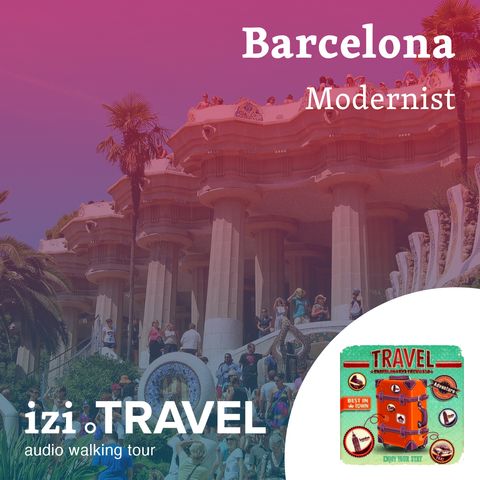Episode 13: Güell Park

Dec 25, 2020 ·
2m 20s
Güell Park takes its name from Eusebi Güell, a rich Catalan businessman who, as we already saw on our first stop at the Güell Palace, commissioned many of Gaudí’s works....
show more
Güell Park takes its name from Eusebi Güell, a rich Catalan businessman who, as we already saw on our first stop at the Güell Palace, commissioned many of Gaudí’s works. On this occasion, Güell and Gaudí conceived a garden dwelling design in an English style, within an upper class estate intended for the Catalan bourgeoisie. However, the project was a complete failure commercially and, although work in the common zones of the estate continued until the beginning of the First World War, Gaudí’s heirs sold the park to Barcelona City Council following the death of Eusebi Güell. Güell Park falls within the finest works of Gaudí’s naturalist phase, meaning we can see an extensive mix of elements inspired by nature, adding a great degree of creative liberty in its forms and imaginative creation in its decoration. The park’s structure is divided into: the main entrance, the dragon and the staircase, the Plaza de la Naturaleza (Nature Plaza), the Viaducto de las Jardineras (Gardeners’ Viaduct), the Viaducto del Algarrobo (Carob Viaduct), the Viaducto del Museo (Museum Viaduct) and the Gaudí Museum. The main entrance to the park consists of an iron door, two pavilions, a store, a shelter for carriages and a main staircase, which has become a symbol of Barcelona and is home to the sculpture of the lizard, which is often confused with a dragon. This staircase leads to the Hypostyle Room or the Room of the Hundred Columns, designed to function as a market for the residential neighborhood, although it doesn’t currently have any function. Above this porch is a plaza bordered by a Gaudí-style bench, which is in the form of a snake and covered by tiles. The views of Barcelona from here are excellent. Gaudí created viaducts that were sufficiently wide to allow carriages to cross the park. The Gardeners’ Viaduct is in the Roman style; the Carob Viaduct is in the Baroque style with wave-like columns; and the Museum Viaduct is in the Gothic style. Lastly, the Gaudí Museum-House was the architect’s residence up until a few months before his death, and was built as a sample house for the estate. The residence contains a significant collection of furniture designed by Gaudí, and diverse objects and works of some of his associates.
Photo Parc Güell (Barcelona) - 58 by Angela Llop is licensed under CC BY-SA 2.0
show less
Photo Parc Güell (Barcelona) - 58 by Angela Llop is licensed under CC BY-SA 2.0
Information
| Author | izi Distribution Services |
| Website | - |
| Tags |
Copyright 2024 - Spreaker Inc. an iHeartMedia Company
